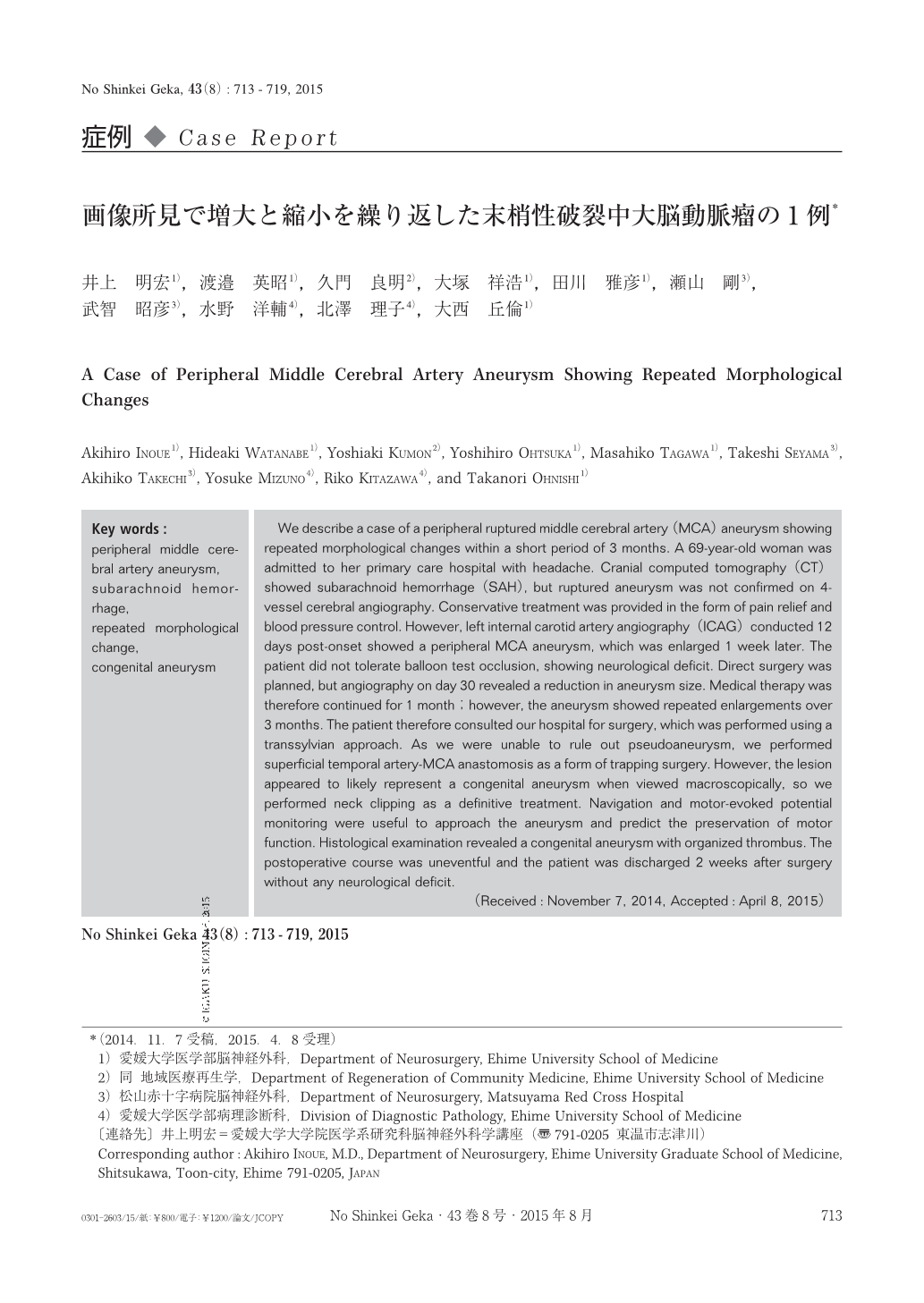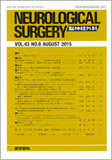Japanese
English
- 有料閲覧
- Abstract 文献概要
- 1ページ目 Look Inside
- 参考文献 Reference
Ⅰ.はじめに
末梢性の中大脳動脈瘤は比較的稀な病態であり,その自然歴や発生原因は多岐にわたるため,治療方針に関しても未だ定まったものはない1,5,6,10,11).今回われわれは,くも膜下出血(subarachnoid hemorrhage:SAH)にて発症し,3カ月の経過観察中に画像所見で増大と縮小を繰り返した末梢性破裂中大脳動脈瘤の1症例を経験したので,文献的考察を加えて報告する.
We describe a case of a peripheral ruptured middle cerebral artery(MCA)aneurysm showing repeated morphological changes within a short period of 3 months. A 69-year-old woman was admitted to her primary care hospital with headache. Cranial computed tomography(CT)showed subarachnoid hemorrhage(SAH), but ruptured aneurysm was not confirmed on 4-vessel cerebral angiography. Conservative treatment was provided in the form of pain relief and blood pressure control. However, left internal carotid artery angiography(ICAG)conducted 12 days post-onset showed a peripheral MCA aneurysm, which was enlarged 1 week later. The patient did not tolerate balloon test occlusion, showing neurological deficit. Direct surgery was planned, but angiography on day 30 revealed a reduction in aneurysm size. Medical therapy was therefore continued for 1 month;however, the aneurysm showed repeated enlargements over 3 months. The patient therefore consulted our hospital for surgery, which was performed using a transsylvian approach. As we were unable to rule out pseudoaneurysm, we performed superficial temporal artery-MCA anastomosis as a form of trapping surgery. However, the lesion appeared to likely represent a congenital aneurysm when viewed macroscopically, so we performed neck clipping as a definitive treatment. Navigation and motor-evoked potential monitoring were useful to approach the aneurysm and predict the preservation of motor function. Histological examination revealed a congenital aneurysm with organized thrombus. The postoperative course was uneventful and the patient was discharged 2 weeks after surgery without any neurological deficit.

Copyright © 2015, Igaku-Shoin Ltd. All rights reserved.


